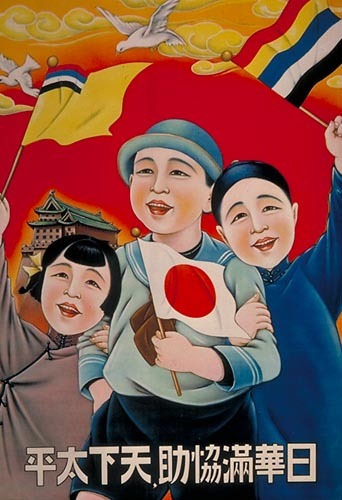Mark Scott Smith's Blog: Enemy in the Mirror, page 93
March 9, 2017
FDR Re-Elected 1944
First elected in 1933 during the Great Depression, the Democrat Franklin Delano Roosevelt instituted successful “New Deal” programs designed to stabilize the economy and provide jobs and relief for the unemployed (e.g., the Agricultural Adjustment Act, National Industrial Recovery Act, Public Works Administration, Tennessee Valley Authority). With the U.S. economy substantially improved, he was re-elected for a second term in 1936.
During his second term, with increasing Japanese and German aggression across the world, FDR attempted to deftly maneuver the country from a position of relative isolationism (exemplified by the America First Committee championed by Charles Lindbergh) into support for the Allied powers battling the Axis.
In 1940, with Nazi Germany over-running much of Europe and Imperial Japan sweeping across the Western Pacific, FDR ran for an unprecedented third term. With his subsequent wartime leadership proving highly effective, he defeated his Republican challenger Thomas Dewey and was reelected to a fourth term in 1944.
The post FDR Re-Elected 1944 appeared first on Enemy in the Mirror.
March 6, 2017
Bombing Japan from Marianas – NOV 1944

At a cost of ~3000 American and 24,000 Japanese lives, the Northern Marianas island of Saipan was taken in July 1944. With the subsequent seizure of Guam and Tinian in August, the U.S. now had ideal locations (~1500 miles from Japan) to construct airfields within the range of the new B-29 superfortress (~5000 miles). Additionally, these new airfields could be directly supplied by ship from the USA.
The 4-engine Boeing B-29 Superfortress was one of the largest aircraft flown during WWII. (Other behemoths included the German Messerschmitt Me-323 and Junkers Ju-390). With state-of-the art technology, the development and manufacture of the B-29 was the most expensive American weapons project of the war (far more expensive than the A-bomb Manhattan project).
The post Bombing Japan from Marianas – NOV 1944 appeared first on Enemy in the Mirror.
March 2, 2017
Censorship WWII USA
This 1944 U.S. Army instructional film about censorship incorporates the humor, sexuality and racism of the time.
During the war, U.S. government control of the news by the Office of War Information was comprehensive. All correspondence between active duty military personnel and civilians was censored. Additionally, all major news organizations (radio, newspapers and newsreels) voluntarily adopted a code that promoted patriotism and ensured that dispatches from the front accentuated the positive.
Prior to the advent of television, which brought the visual horror of war into America homes each evening, the media presentation of WWII was carefully managed to maintain popular support for the war. Consequently, many disturbing aspects of WWII were hidden from American public view.
The post Censorship WWII USA appeared first on Enemy in the Mirror.
February 27, 2017
The German War

Using German archival records and letters and diaries of both civilians and soldiers during WWII, The German War – A Nation Under Arms, 1939–1945 by Nicholas Stargardt is a fascinating book that illustrates the strong civilian support for Germany’s armed forces right up until the end of the war. At the same time, the book shows how the ordinary German (civilian and soldier) rationalized atrocity and genocide as necessary for the good of the nation.
For a several decades after WWII, the myth of “good” Germans vs. the “evil” Nazis was maintained in post-war Germany. It wasn’t until the mid-1960s that the next generation began seriously questioning their parents about their role in the war. Finally, at the turn of the 21st century, a traveling German exhibition regarding the role of ordinary soldier (Wehrmachtsausstellung) showed beyond doubt the culpability of the ordinary soldier (not just the SS) in atrocity and genocide.
In 1985 the German President Richard von Weizsäcker delivered a speech to the Bundestag acknowledging WWII Germany’s evil deeds and proclaiming May 8, 1945 as the day of Germany’s liberation from despotism rather than surrender and occupation. Subsequently, reluctance to examine the facts about the Third Reich faded and critical inquiry expanded.

In my view, Japan has yet to come to similar realization regarding the terrible atrocities committed by its armed forces on enemies and civilian populations all over Asia. (Part of this fact may have paradoxically been due to the fact that much of Imperial Japanese history was skipped over in new textbooks during the reconstruction of the Japanese educational system by America educators after the war).
It was true that Western imperialism had abused and hobbled many Asian countries before the war. And certainly the decision to firebomb most Japanese cities in 1945 and ultimately drop atomic bombs on Hiroshima and Nagasaki left powerful moral questions about targeting civilians in wartime.
But Imperial Japan’s assertion that it was acting as a “big brother” to lead Western-colonized nations into the light of freedom was patently disingenuous. Imperial Japanese occupation of Asian countries was uncommonly cruel and rapacious.
The post The German War appeared first on Enemy in the Mirror.
February 23, 2017
U.S. Pilot Defects – 1944

For years a devotee of the ultra-conservative radio ministry of Father Charles Edward Coughlin, a 23 year-old USAAF P-38 pilot named Martin James Monti defected to the Axis powers in October 1944.
Why a young American might actually defect to the Axis is hard to fathom. But it looks like the fiery Father Coughlin influenced his beliefs – particularly regarding ant-semitism and anti-communism.
With millions of listeners throughout the USA and Canada, Father Coughlin was a hostile critic of FDRs liberal social programs. In the late 1930s he became vociferously anti-communist and anti-semitic to the point that he openly supported the Fascist regimes of Germany and Italy. When the war broke out, Father Coughlin’s radio broadcast was finally taken off the air.
Here is a short example of Father Coughlin’s malignant rhetoric. If you close your eyes, or even leave them open and note his gestures, his style of speaking (and the crowd response) is unmistakably similar to Adolf Hitler.
The post U.S. Pilot Defects – 1944 appeared first on Enemy in the Mirror.
February 20, 2017
Volkssturm 1944
As German military forces were beginning to suffer major losses, Adolf Hitler created a national militia called the Volkssturm (“people’s storm”) in October 1944. Under control of the Nazi party, rather than the Wehrmacht, the Volkssturm drafted nearly six million men aged 16-60 years who were not already members of the German Armed Forces.
Inspired by the Prussian Landsturm militia that fought guerilla-type actions in the Napoleonic wars, the Volkssturm was created as part of Propaganda Minister Joseph Goebbels’ strategy of Total War.
The post Volkssturm 1944 appeared first on Enemy in the Mirror.
February 16, 2017
陸軍 – Rikugun (Army) 1944
Army (陸軍 Rikugun, a powerful, multi-generational epic about military legacy and parental love during wartime, was directed in 1944 by Keisuke Kinoshita. The film starred Chishū Ryū and Kinuyo Tanaka.
The film’s silent, final scene was controversial at the time and barely escaped rejection by Imperial Japanese censors. In that scene, as her son marches off for deployment to Manchuria, his mother (Kinuyo Tanaka) runs alongside him in tears. Apparently, the censors were concerned because Japanese mothers were supposed feel proud (not anxious) when their sons went off to battle.
In the end, the censors backed off and the scene remained – perhaps (as suggested by critic Donald Ritchie) because the mother’s display of emotion could be interpreted as caused by internal conflict between her duty to be proud and her own desire to love and possess him. Others have suggested the scene was left intact because it was wordless. Nevertheless, the director Keisuke Kinoshita was not permitted to release another film for the remainder of the war.
This film seems to be another example of the sophistication and nuanced Japanese film industry during WWII. In comparison, it seems to me, characters in American films at the time were predictably brave, stoic and one-dimensional.
I was unable to find a film clip of this interesting movie, but here are interesting biographies of the stars.
The post 陸軍 – Rikugun (Army) 1944 appeared first on Enemy in the Mirror.
February 13, 2017
Hands To Finish the Job – 1944
This slick propaganda film produced by the U.S. Army Signal Corps utilized the metaphor of “hands” to inspire Americans in 1944.
The post Hands To Finish the Job – 1944 appeared first on Enemy in the Mirror.
February 9, 2017
Rommel’s Suicide – Oct 1944
After the 1943 defeat of the Afrikorps in North Africa, Field Marshal Erwin Rommel was recalled to Europe to oversee the defense of the Atlantic coast.
One of Germany’s most successful and popular generals, Rommel soon began to harbor doubts about Adolf Hitler’s reasons for initiating the war and his leadership capabilities in a possible negotiation for peace. After the successful Allied Normandy invasion and subsequent advance across France, Rommel was certain Germany would lose the war.
In June 1944, apparently unaware of an assassination plot against Hitler, Rommel discussed possible surrender with several military men who were subsequently involved in the July assassination attempt. When his communication with the conspirators was revealed, suggesting possible complicity in the plot, he was given the option of suicide instead of a public trial which would taint his reputation and possibly harm his family.
On the October 14, 1944, Erwin Rommel took his own life by biting into a cyanide capsule. He was subsequently given a full military burial.
The post Rommel’s Suicide – Oct 1944 appeared first on Enemy in the Mirror.
February 6, 2017
Battle of Leyte Gulf – October 1944
The Battle of Leyte Gulf (October 23–26, 1944) proved to be the most decisive naval engagement in the Pacific War. Japanese defeat resulted in severe losses of its remaining surface vessels and virtually ended its ability to move resources from Southeast Asia to the home islands.
When the U.S. launched an amphibious assault on the central Philippine island of Leyte, the Imperial Japanese Navy implemented Operation Sho-Go, an attempt to use one attack force as a decoy to draw part of the U.S. naval forces away, while concentrating three other attack forces on Leyte Gulf landing site. Although the ruse did achieve initial success, and the Imperial Japanese Navy was able to inflict serious damage, U.S. forces prevailed after three days of heavy fighting.
Casualties and losses:
USA
~3,000 casualties;
1 light carrier,
2 escort carriers,
2 destroyers,
1 destroyer escort sunk
200+ planes
Imperial Japan
~12,500 dead;
1 fleet carrier,
3 light carriers
3 battleships,
10 cruisers,
11 destroyers sunk
~300 planes
Notably, the Battle of Leyte Gulf was the first time Japan employed suicidal kamikaze attacks.
The post Battle of Leyte Gulf – October 1944 appeared first on Enemy in the Mirror.
Enemy in the Mirror
I began by posting events around the turn This website www.enemyinmirror.com explores the consciousness, diplomacy, emotion, prejudice and psychology of 20th Century America and her enemies in wartime.
I began by posting events around the turn of the 20th century as I was researching my first novel about the Pacific War. I continued through WWII for my second novel about the Battle of the Atlantic. Now I am beginning to look at the Cold War as I gather information for my next novel about the Korean War. ...more
- Mark Scott Smith's profile
- 7 followers




